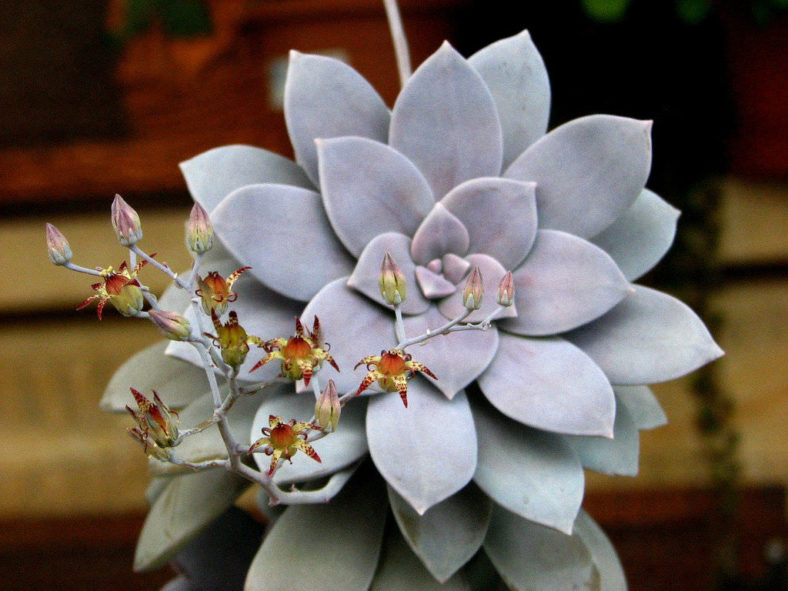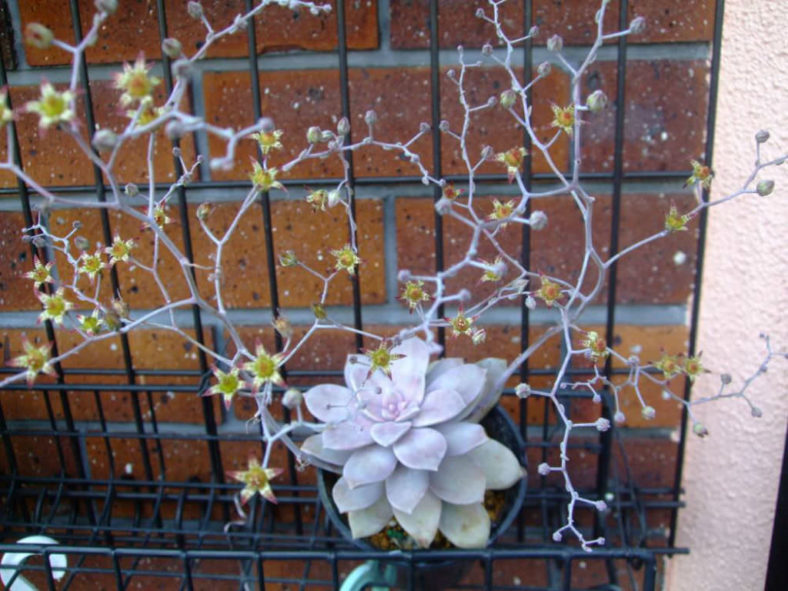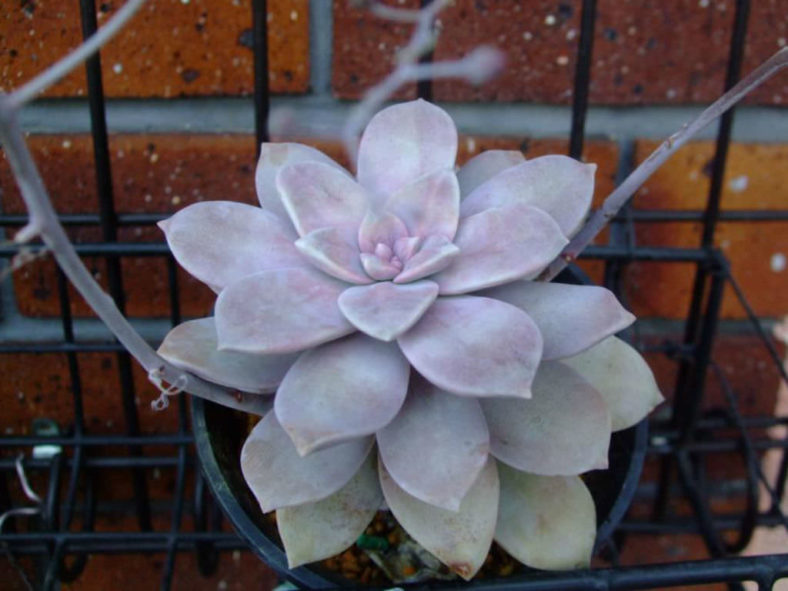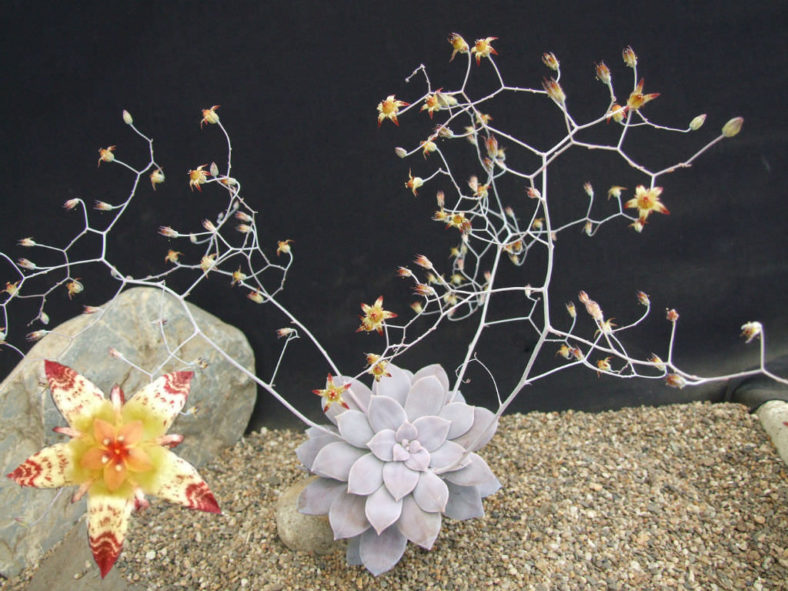Scientific Name
Graptopetalum superbum (Kimnach) Acev.-Rosas
Common Name(s)
Beautiful Graptopetalum
Synonym(s)
Graptopetalum pentandrum subsp. superbum, Quetzalcoatlia superba
Scientific Classification
Family: Crassulaceae
Subfamily: Sedoideae
Tribe: Sedeae
Subtribe: Sedinae
Genus: Graptopetalum
Etymology
The specific epithet "superbum" (pronounced "soo-PER-bum") means "proud, superior, superb, excellent, distinguished; splendid, magnificent" and refers to the fascinating beauty of this species.
Origin
Graptopetalum superbum is native to Mexico. It occurs in Jalisco at elevations of about 3,940 feet (1,200 m).
Description
Graptopetalum superbum, formerly known as Graptopetalum pentandrum subsp. superbum, is a stunning shrubby succulent with suberect to semi-decumbent stems and blush to lavender, heavily glaucous leaves that cluster in a rosette at the end of the stems. It can grow up to 8 inches (20 cm) tall, branching from the base. The rosettes are dense, nearly flat, and can reach a diameter of 5 inches (12.5 cm). The leaves are thick, fleshy, soon deciduous, oblong-obovate, with a deltoid mucro, and can measure up to 2.4 inches (6 cm) in length and 1 inch (2.5 cm) in width. Old plants can have stems up to 7 feet (2.1 m) long, but this plant usually remains relatively compact, especially when grown in full sun.
The flowers are star-shaped, with 5 or 6 greenish-yellow petals with red tips, 2 or 3 crossbands, and scattered dots of the same color below. From late winter to early spring, they appear on erect or ascending, multiple-branched inflorescences that can grow up to 16 inches (40 cm) long.

Forms of Graptopetalum superbum
Hybrids of Graptopetalum superbum
How to Grow and Care for Graptopetalum superbum
Hardiness: USDA hardiness zones 9b to 11b: from 25°F (-3.9°C) to 50°F (10°C).
The rules for Graptopetalum care are similar to those for most succulents. All require lots of sunlight to look their best. They require gritty, well-drained soil. Water regularly over summer and let the soil dry out between waterings. Minimal water is required over winter. Overwatering causes root rot, and the plant can become susceptible to several pest infestations. Fertilize once during the growing season with a balanced fertilizer diluted to 1/4 strength.
Graptopetalums are generally easily propagated by seeds, leaf cuttings, or offsets. Any rosette that breaks off can root and start a new plant. Even a leaf that drops off will quickly root below the parent plant and produce a new rosette. The new plant feeds off the leaf until it shrivels and falls off. By then, the new little plant had rooted and sprouted new leaves.
Learn more at How to Grow and Care for Graptopetalum.
Links
- Back to genus Graptopetalum
- Succupedia: Browse succulents by Scientific Name, Common Name, Genus, Family, USDA Hardiness Zone, Origin, or cacti by Genus
Photo Gallery
Click on a photo to see a larger version.


